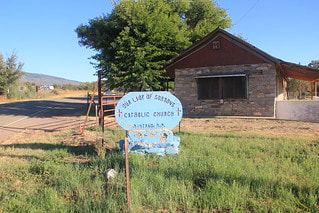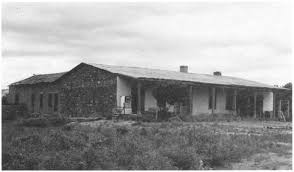
Alexander Grzelachowski was born in 1824 in Gracina, Poland. The son of a Polish Officer in the Napoleonic Wars, he became a Catholic priest, then emigrated to the United States in 1847. He served in Ohio until 1851, when he accompanied Jean Baptiste Lamy, the principle figure in Willa Cather’s novel Death Comes to the Archbishop, to New Mexico. He served several parishes, including Manzano’s Our Lady of Sorrows. Grzelachowski spoke fluent Spanish, and his parishioners called him Padre Polaco, the Polish Father.

Late on the night of March 28, 1862, Major John Chivington and his men became lost in a snowstorm in the treacherous and uncharted terrain atop Glorieta Mesa. Chivington had set out that morning with orders to drop down on the Confederate rear, so that his 400 men and Colonel John Slough’s 800 men could trap Colonel Scurry’s 1,300 Confederate troops between them. Instead, Chivington and his men had strayed off course, gone too far, and found themselves staring down at Johnson’s Ranch, where the Confederates had left their supply train under a light guard. Chivington had destroyed that train, an act that forced the Confederates to retreat to Texas, securing New Mexico for the Union.
 Grzelachowski's store in Puerto de Luna
Grzelachowski's store in Puerto de Luna After the war, Grzelachowski returned to private life. He started a family in 1870, marrying Secundina C. de Baca, with whom he fathered at least two daughters, Emma and Adelina. By 1872, the family had moved to Puerto de Luna, a little town on the bank of the Pecos River, about nine miles south of Santa Rosa. Here he opened a mercantile store similar to the one he operated in Las Vegas. He also ran a ranch, raised sheep, cattle and horses, and maintained a large orchard and vineyard.

Grzelachowski continued to be active in civil affairs throughout his life. He was the postmaster for Puerto de Luna, operating the post office out of his mercantile store. He also used the store as his chambers while he served as San Miguel county’s justice of the peace. After he helped lobby the territorial legislature for the creation of Guadalupe county from the southern part of San Miguel county in 1893, he served as the new county's first probate judge. Three new commissioners for Guadalupe county were sworn into office in his store.
In 1896, when he was 72 years old, the man often called Don Alejandro was thrown from a wagon while riding to his Alamogordo ranch. He is buried in the Nuestra Senora De Los Dolores Cemetery outside of Milagro, a small town in Guadalupe county.

She wishes to thank Bernadette Flores for sharing pictures and stories of her illustrious ancestor, who will have a small role in her upcoming book.









